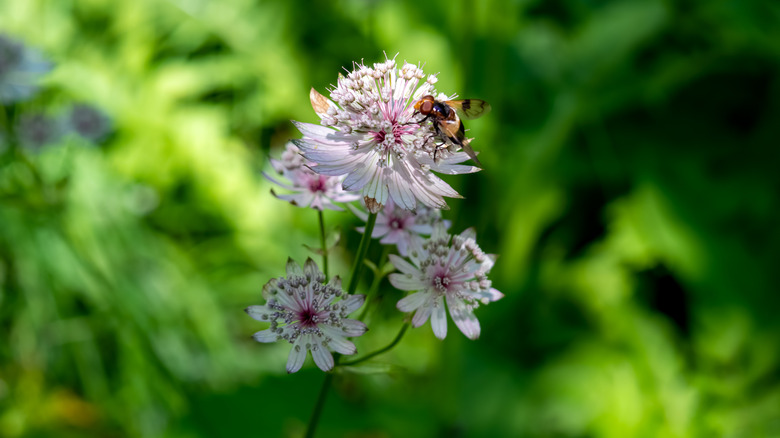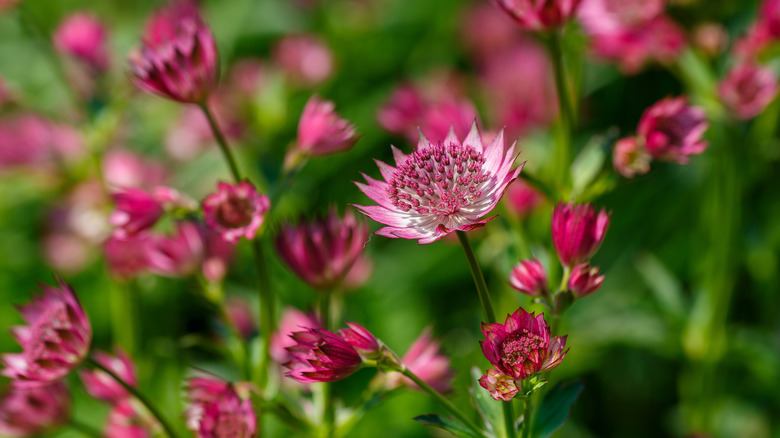The Beautiful Late Summer Flower That'll Draw Pollinators To Your Garden Into Fall
As summer starts to wind down, one of the first things many of us miss is the quiet yet constant hum of pollinators drifting through the garden. That soft buzz is the sound of a thriving yard in peak summer season, and a sign that your garden is full of life. But if you're not quite ready to say goodbye to the sights and sounds of summer, there's one colorful flower that will bring bees into your yard and keep the buzz going from summer through to fall.
Astrantia (Astrantia major), also known as great masterwort, might just be the late-season plant your garden is missing. This tough yet elegant perennial adds a soft, romantic touch to borders and flowerbeds. Just as many other blooms begin to fade, astrantia really comes into its own. Blooming from summer and even into early fall with regular deadheading, it sends up delicate, pincushion-like flowers in muted shades of white, pink, and red. And best of all? These blooms are a magnet for pollinators, offering a much-needed nectar source late in the season.
Why pollinators love astrantia
Unlike other, more vibrant flowers, astrantia doesn't rely on bright, bold colors to grab a pollinator's attention. While bees and butterflies are drawn to bright flowers whose striking colors acting like a beacon, astrantia's soft shades of white and pink are more muted. Instead, the flower's unique structure makes up for what it lacks in color. Each bloom is comprised of a cluster of tiny flowers surrounded by starry bracts, forming a kind of cushion-like landing pad that's perfect for pollinators to perch on while they feed.
That built-in accessibility is one of astrantia's biggest strengths. Pollinators don't have to work hard to find nectar, and the flower's gently sweet fragrance helps draw them in. Even better, astrantia blooms right through to early fall, which is a time when many other nectar sources are fading. This makes it an important stop for late-season pollinators still looking for food sources. So, if you're hoping to keep your garden buzzing beyond peak summer, astrantia offers a beautiful and beneficial way to do so. No bright colors required.
How to grow astrantia to attract more pollinators
Starting a pollinator garden begins with knowing what plants to grow and how to grow them. If astrantia is part of your pollinator garden plan, then planting it in a spot with partial shade and well-draining soil will get you the best blooms. A location with dappled afternoon shade gives it the balance it needs to thrive, as it prefers cooler conditions and may wilt if planted in a spot that gets full sun all day.
Astrantia does well in USDA Hardiness Zones 4 to 7, making it a great choice for cooler climates. Space your plants about 18 inches apart as this is how wide they can get, and keep the soil consistently moist, especially during hot or dry spells. You can add mulch around the base to lock in moisture.
Regular deadheading should encourage repeat flowering that lasts into the cooler fall months, helping to keep the pollinator traffic coming in thick and fast. Astrantia fits beautifully into cottage-style yards, or as an addition to your chaos garden, or even mixed containers on a shady patio, so take your pick of where to plant it. Once established, it's a low-maintenance plant that will quietly support pollinators well into fall.


